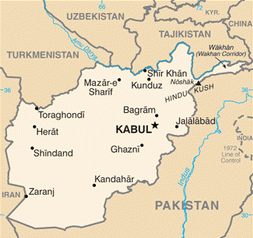NATO’s so-called withdrawal from Afghanistan is being called an “irreversible” course to end the war, but fundamental aspects of the war will continue far into the future and even President Barack Obama admitted the plan was fraught with risks.
 At the NATO summit in Chicago, the Western alliance formally endorsed a plan that aims to hand control of Afghanistan to its own security forces by the middle of next year, but left unaddressed the failure to either train an independent Afghan force or to eliminate the Taliban, supposedly the two major missions of the war.
At the NATO summit in Chicago, the Western alliance formally endorsed a plan that aims to hand control of Afghanistan to its own security forces by the middle of next year, but left unaddressed the failure to either train an independent Afghan force or to eliminate the Taliban, supposedly the two major missions of the war.
Notably, talk of victory was absent from the proceedings, as was talk of bringing a democracy to Afghanistan. Even President Obama and his European vassals can’t pretend that is the case. But Obama did say he expects to leave behind a stable Afghanistan.
For virtually every six month period since the beginning of the surge in 2009, the rate of bloodshed and violence has increased considerably. Last year saw a rise in overall violence for the fifth year in a row.
In a report submitted last Tuesday to Congress, the Pentagon acknowledged a “resilient” Taliban and many analysts have predicted at least a partial return to power by the Taliban.
In January, the National Intelligence Estimate concluded the war is still a “stalemate,” that the Taliban are still strong, that Washington has propped up a government plagued by pervasive corruption and illiberal policies, etc.
In addition, new insurgent groups have emerged in Afghanistan, breaking off from the Taliban and engaging in renewed campaigns to to commit violence against Kabul if it goes ahead with NATO’s plan, which keeps a considerable troop presence and operational capacities in the country.
Afghan troops, supposedly ready to take over security for the country by mid-2013, consistently get into gun battles with their American and NATO counterparts and less than 1 percent of them can operate independently, without NATO guidance.
The deal being christened at the NATO summit maintains a significant presence of ISAF trainers in Afghanistan until at least 2024. The U.S. will continue conducting night raids and drone strikes into Pakistan.
The relationship with Pakistan remains extremely rocky. Islamabad, and the powerful secret service, the ISI, have long preferred Taliban influence in Afghanistan over that of the U.S.-installed Hamid Karzai regime. Pakistan’s number one security concern is India, and is likely to try to prevent Indian influence in Afghanistan by proxy (namely, Taliban and affiliated groups).
Sadly absent from the NATO summit was any recognition that the hundreds of billions of dollars and the tens of thousands of lives wasted in the name of saving political face have done nothing to change the dynamic from when Obama first took office. The U.S. and NATO have done much damage to Afghanistan over the last decade and it has little in security gains to show for it.
The war is a failure, and it is only recognized implicitly by the reckless leaders sitting comfortably in Chicago.


